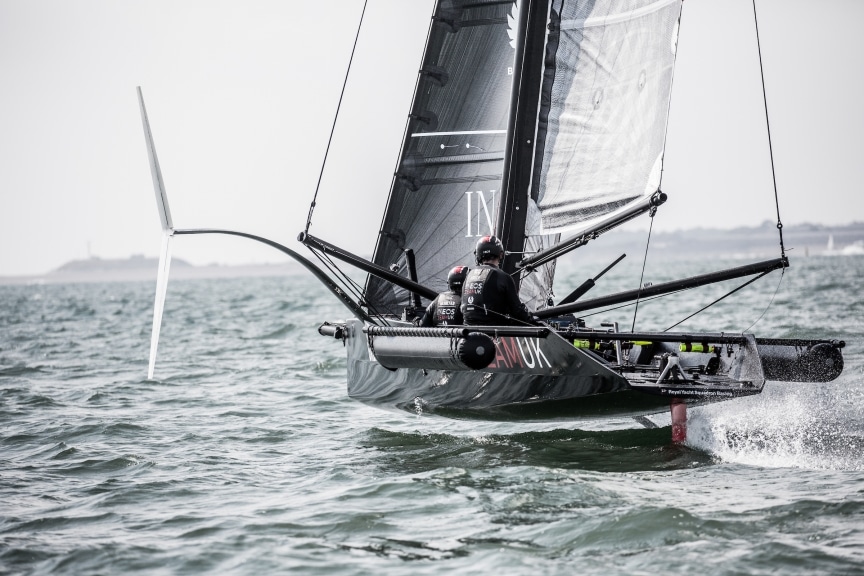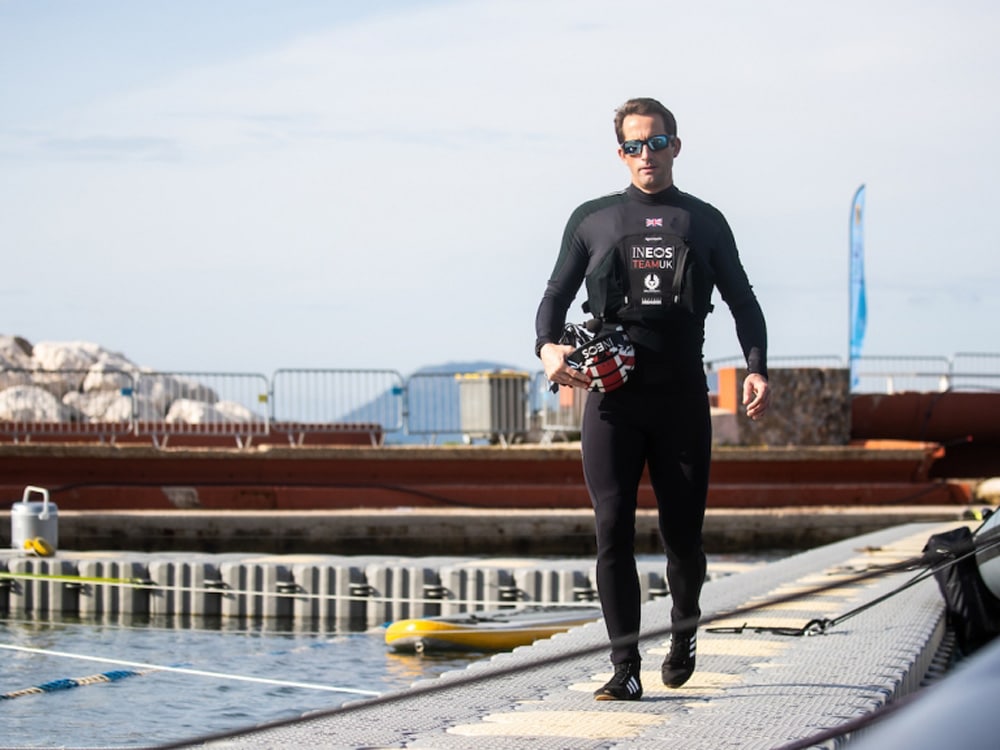There is not the slightest trace of the 2017 team at the Portsmouth headquarters of INEOS Team UK; the changeover is total and complete and with it a contented Ben Ainslie who says he is looking forward to launching the new AC75. He admits, however, that event will not be until much later in the year.
He was cagey in the details as to when this would be: “Sometime in the summer, and then racing in the World Series. I gather we have to go to Cagliari [Italy] in October, but whether we will make it is questionable. We will have to see.”
It’s obvious the March 31 dates — the first time an AC75 is allowed to be launched — is out of the question. When pressed, he instead offers: “July time. We will be later than a lot of the others, sometime in the summer. We will be racing around the Solent in time for Cowes Week [August 10 to 16].”
He laughingly suggests that they would race in Class Zero against some of the Fastnet Race competitors.
The AC75 is in build, locally by Jason Carrington and his team and “they are doing a great job,” Ainslie says. “We started to build toward the end of last year, but I can’t be too specific about the date.”
He’s unsure about the state of the other teams’ boats but adds, “Once there were three teams signed up together with New Zealand and suddenly eight potential challengers came out of nowhere, one of which is really solid, the West Coast team, Stars & Stripes USA, but there is considerable conjecture about the other two. It would be nice to see them on the starting line. We need some more information out of New Zealand, but that is not forthcoming.”
While acknowledging the Maltese and Dutch challenges, Ainslie says, “Six teams on the starting line (of the Prada Cup) would be good. It doesn’t give us a better chance of getting through, because some of them will have government funding, and strangely that means more money into the Kiwi’s war chest, and that is certainly helping the Defenders.”
He agrees that this time, his own bigger budget is helping.
INEOS Team UK, he says, isn’t affected by any public flack over the parent company’s fracking policy. “Some people’s views on this have been voiced, but the protestors have not been here in Portsmouth and we are not hiding the signage on this building [Note: This is a large, outstanding building on the Portsmouth waterfront]. It’s only a small minority with social media activity that is engaged.”

The sailing activity continues with the 28-foot test boat, which he says appears to attract spies from the other teams. “Everyone wants to know what we are doing and how we progress,” Ainslie says. But what the British team was getting from this boat was not difficult to see.
“Quite a lot,” Ainslie says. “First and foremost, to the type of boat – we can sail it. We have had some good information from the 28. The main aim is to develop the control systems, testing the handling of this boat and helping the simulator results, and so it is really critical. Mostly it is in the control systems and while it is something of a spectacle on the water, we have to remember that the real one will be three times the size. The American Magic boat is a 38-footer and they are getting to grips with that and doing, what I believe, is a great job.
When it’s pointed out that INEOS Team UK will go straight from its relatively small boat straight into an AC75, Ainslie is unruffled. He’s not concerned that both Luna Rossa and American Magic will have their new boats in the water at the beginning of April. His plans were simply to have the full-size boat in the water as soon as it could be achieved.

“We are working as hard as we can to launch it as quickly as possible,” he says. “Then we will check on the second boat to have that out in New Zealand at the end of 2020.”
When surprise is expressed at going to Auckland with a brand new and untried boat, he agrees it will be a big challenge. His decisions on this will be governed by exactly when it will be completed.
“It’s a big challenge on just how late you can launch a second boat,” he says. “There is the time one needs to get it up to speed. Does one launch it here in the Solent or do we ship it to New Zealand and work on it there? That is still a decision to be made.”
The question of the “double” mainsail seems to be one that is puzzling to a degree. “We have made significant progress with the ‘double sail,” says Ainslie. “It’s another area of development to go through. It has been interesting, but I can’t say too much. It is very different from the single film mainsail. It’s a case of how you can trim the sail and all the other challenges it presents. It has been quite different and we have learned a great deal from that. One will see when the teams get to Auckland (and the pre-Prada Cup series races) that they will all look for different solutions to make it as efficient as possible, and we will be amongst them!”
The difference between a wing and the double-membrane sail is most marked by the fact that both of the skins did not go all the way to the leech. “We are testing lots of theories about where we are and just develop around them,” Ainslie says with some reserve, “but it will be highly critical getting the mainsail right. The control of the mast and mainsail will be as important as the foil controls — and it’s all new to us.”
RELATED: American Magic’s crew explores the new foiling dynamics of the AC75
Ainslie also hints at another ‘new’ challenge not present in the previous America’s Cup — the use of headsails. “The use of a Code Zero is going to be interesting in the lighter airs; in fact the use or not may be highly critical. How you set the rig in different wind strengths will make the difference between winning and losing — it’s a huge challenge. We have been using one on our test boat — it is not a critical design at the moment, but it has given us an understanding of what we want to do with it on the bigger boat. It is another step in our design process.”
Which leads naturally to what is forthcoming from the design team. “We are extremely happy with the designers — Nick [Holroyd] is doing a fantastic job. He understands everything, including the simulator. And Grant Simmer too, he’s no slouch when it comes to design. We have huge design capacity and the designers are helping on the foils and the simulation. Nick and the other new members together with the core talent from the last Cup have gelled well.”
It is easy to say in the last campaign that the team struggled in design, Ainslie admits, but one can’t underestimate the challenges they face. This time, he’s in a much stronger position all round. The question of how important the simulator results are to the design team draws a two-word answer: “Absolutely critical!”
And to the percentage of simulator results being good, Ainslie is equally forthright. “There is a lot in there,” he says. “If it is wrong, we are buggered!”









